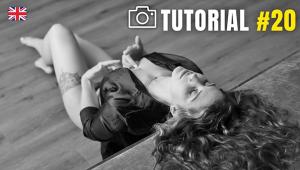Leica’s D-Lux 2; It’s The Perfect Vacation Camera—And It’s A Leica
Let me begin with a confession. When testing Leica's D-Lux 2 I did something I advise Shutterbug's readers never do: I received the camera on Friday and on Sunday stuck it and the user's guide in my pocket to read on the four-hour flight from Denver to Acapulco, Mexico. Oh, yeah, I charged the battery before I left. It's a testament to this camera's ergonomics, design, and flawless execution that I rarely had to wonder what to do next to capture any photograph.
 |
De-Luxe, D-Lux
The Leica D-Lux 2 is the company's first digital point-and-shoot camera
with an 8.4-megapixel CCD sensor. Featuring a 2.5" LCD display (there's
no optical finder) with a resolution of 207,000 pixels, the screen can be switched
to a low-power mode without sacrificing image quality. You can switch on a "rule
of thirds" grid, which I found more distracting than useful, but if you
have trouble keeping horizon lines straight, it'll be useful. Especially
since the D-Lux 2 is a multi-format camera.
Moving a lever mounted on the side of the lens, you can switch the photographic
format by selecting one of three possible aspect ratios. Apart from the 4:3
format and the classic 3:2 (I guess they did invent it) Leica ratio, the D-Lux
2 lets you make images in HD's 16:9 format at the imaging chip's
full resolution. Not so with the others. Depending on the format, resolution
varies from 6 megapixels in the 4:3 format to 7 megapixels in the 3:2 format.
Much of the time I shot in 16:9 and most of the illustrations, maybe all of
them, were made that way to maximize image resolution and impact.
 |
|
|
The DC Vario-Elmarit f/2.8-4.9 aspherical zoom lens consists of nine elements in eight groups. A focal length equivalent of 28-112mm provides a wide range of possibilities for image composition. Leica says, "the optics have been individually matched to the camera sensor" and image quality was nothing short of outstanding. A mostly useless 4x digital zoom is available but I didn't use it and neither should you.
 |
|
|
The D-Lux 2 includes an integrated Image Stabilizer that can be switched on and off and compensates for camera shake to prevent blurred images and makes it possible to capture sharp pictures in low-light and twilight situations. A small button in front of the shutter release activates Anti-Shake mode and it never got in the way and was always available when needed. In Mode One, stabilization operates continuously and in Mode Two, activates only at the moment of capture. I tried this latter mode on a boat trip while riding down the Colorado River near Laughlin, Nevada, and it produced sharp images. I happily bounced back and forth between each mode in low-light conditions, such as sunsets.
 |
|
|
Exposure modes include Programmed Automatic, Shutter-Speed Priority, Aperture
Priority, and Manual. Since this is a point-and-shoot camera, I made most images
in Program mode, except when I wanted to try something different and that's
when I reached for one of the Scene programs available from a dial on the top
of the camera. Options include Portrait, Sport, Nighttime Landscape, Nighttime
Portrait, Fireworks, Party, Snow, Self-Portrait, Food, Baby, Soft-Focus for
Skin, Candlelight, Starry Sky, and Landscape.
Even under difficult lighting conditions that would freak out most cameras,
the D-Lux 2 delivered accurate exposures. Bracket and Exposure Compensation
modes are also available when you want to get the "perfect" exposure
and I made liberal use of exposure compensation controls but didn't bracket
much.
 |
|
|
Color Effects include Cool, Warm, Black and White, and Sepia. Unlike most
in camera Sepia effects that are too orange, the D-Lux 2 produces effects that
capture a true "sepia" mood. I also liked the Cool and Warm effects
for punching up color tones in images that could use it. Black and White mode
was spot on and just the ticket when you want to explore your inner Cartier-Bresson.
Fun In Acapulco
I took Leica's D-Lux 2 with me everywhere on my trip to Acapulco and tested
it under a wide range of photo conditions. From night shots of Acapulco Bay
to taking it into the jungle to photograph native petroglyphs, the camera was
my constant companion and never let me down. If there were any failings they
are some I've seen in every Leica point-and-shoot: The maximum available
ISO is 400, which is a common limitation for many digital point-and-shoots,
but this is a Leica, after all. The other problem is noise at ISO 400, which
is significant at long exposures. The D-Lux 2 is also relatively expensive,
but this is a Leica, after all.
 |
|
|
For traditionalists, manual focusing is accomplished by manipulating a joystick
on the camera back and while I played with this function I never used it to
capture images. The autofocus is fast, accurate, and reliable with hardly any
out-of-focus pictures. The camera's built-in flash looks like something
Barbie might use to photograph Ken on his surfboard, but is surprisingly versatile.
- Log in or register to post comments

































